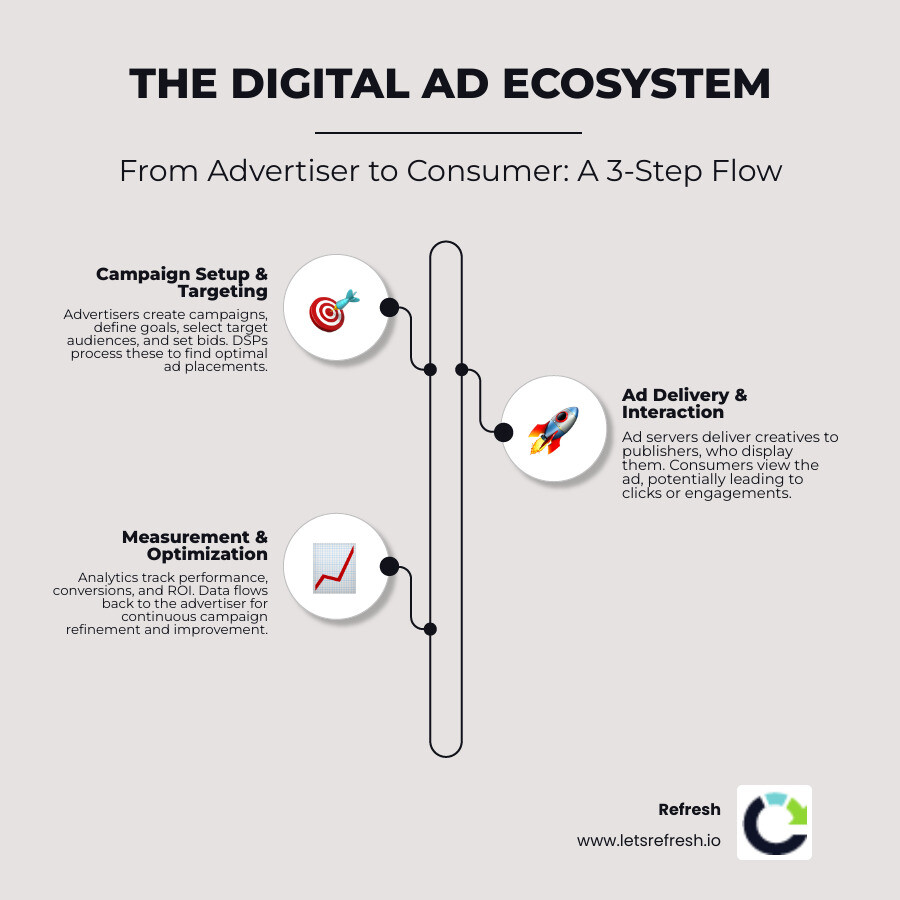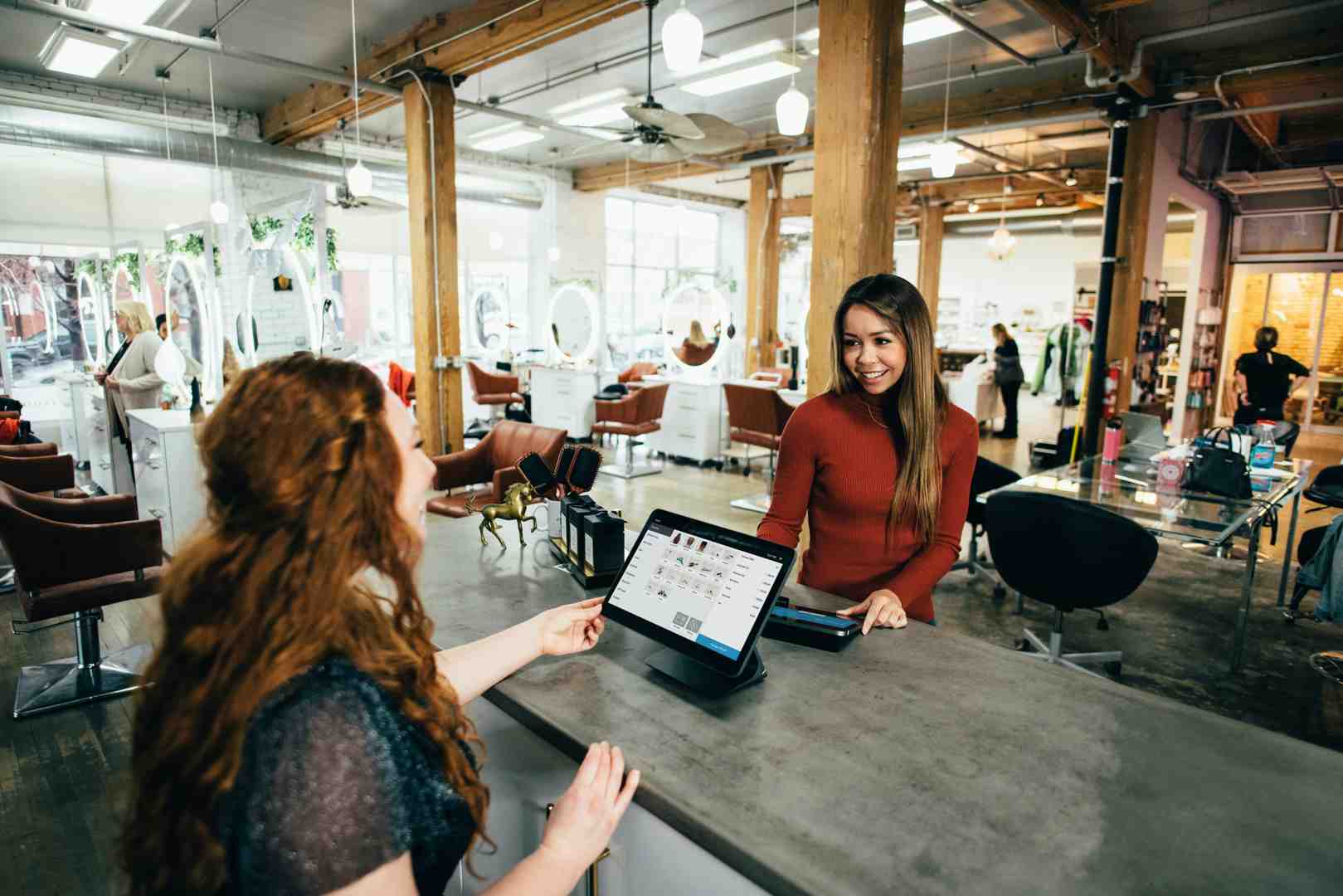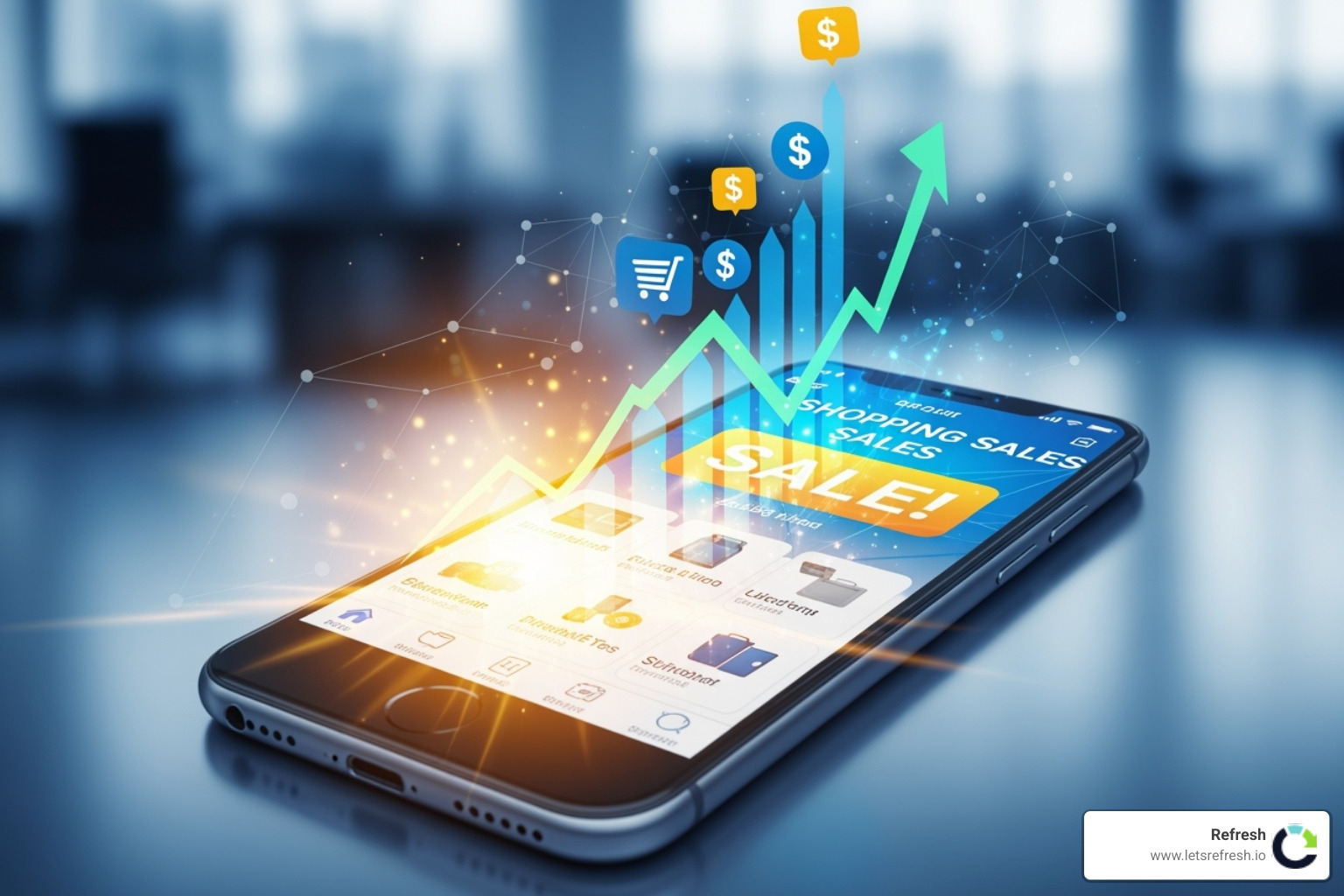October 30, 2025
Why Digital Advertising Solutions Matter for Your Business
Digital advertising solutions are platforms and tools that help businesses create, manage, and optimize paid ad campaigns across online channels like search, social media, and video. They combine technology, targeting, creative tools, and analytics to connect brands with the right audience and turn ad spend into measurable results.
Core components of digital advertising solutions include:
- Campaign management platforms - Centralized dashboards to create and control ads.
- Targeting and audience tools - Technology to reach specific demographics, interests, and behaviors.
- Creative and format options - Ad types like search, display, video, native, and shopping ads.
- Analytics and measurement - Real-time tracking of performance, ROI, and conversions.
- Automation and AI - Smart bidding, optimization, and audience-finding features.
- Budget controls - Flexible spending limits and cost management tools.
The landscape includes comprehensive platforms like Google Ads and LinkedIn Ads, as well as specialized solutions for channels like Connected TV. Today’s solutions offer scalable options for any size business, with some platforms allowing you to start with as little as $10 per day.
I'm Alexander Palmiere, Founder and CEO of Refresh Digital Strategy. For over a decade, I've helped small to medium-sized businesses use digital advertising solutions to drive measurable growth. I've seen how matching the right platform to your purpose and optimizing with data transforms business outcomes.

The Anatomy of a Digital Advertising Solution
A digital advertising solution is the engine of your online marketing, turning strategy into ads that real people see. It’s a combination of user-facing tools and complex back-end technology.
Key user-facing components include:
- Campaign Management Interface: Your central dashboard for launching campaigns, adjusting budgets, and monitoring performance.
- Audience Targeting Tools: Precision instruments to reach specific demographics, interests, or professional roles, ensuring your ads find the right people.
- Ad Creation Studio: Where you write copy, select visuals, and produce videos to capture attention.
- Analytics and Reporting: Your source for tracking clicks, impressions, conversions, and return on investment (ROI) in real-time.
- Budgeting and Bidding Controls: Tools to manage spending with daily or lifetime caps and automated systems that bid on ad space to maximize value.
Mastering these components is essential for effective Digital Ad Campaign Management.
Core Technical Components
Behind the scenes, a complex technical ecosystem ensures your ads are delivered efficiently:
- Demand-Side Platforms (DSPs): Allow advertisers to buy ad space across thousands of publishers from a single interface, like The Trade Desk.
- Supply-Side Platforms (SSPs): Help publishers sell their ad inventory to the highest bidder in a real-time marketplace.
- Data Management Platforms (DMPs): Collect and organize audience data to create highly specific targeting segments.
- Ad Servers: Store creative assets and deliver them to the correct ad slots, while also tracking clicks and impressions.
- Measurement Partners: Provide independent, third-party verification of your campaign results to ensure accuracy.
The Role of Creative and Targeting
Technology is only effective when paired with compelling creative and precise targeting.
Common ad formats include:
- Search Ads: Text-based ads that appear on search engines like Google, targeting users with high purchase intent.
- Video Ads: Engaging stories delivered on platforms like YouTube, social media, and Connected TV.
- Display Ads: Visual, image-based ads that build brand awareness across websites and apps.
- Native Ads: Designed to blend in with the surrounding content for a less intrusive user experience.
- Shopping Ads: Product-focused listings with images and prices, ideal for e-commerce.
Sophisticated targeting methods ensure your creative reaches the right audience:
- Contextual Targeting: Places ads on content relevant to your product (e.g., running shoe ads on a marathon blog).
- Behavioral Targeting: Reaches users based on their past online actions, such as website visits or searches.
- Geofencing: Targets users within a specific geographic area, down to a single postal code.
- Professional Targeting: Essential for B2B, this method uses data like job title, industry, and company size, a specialty of LinkedIn Ads.

Matching the Platform to Your Purpose
There is no single best digital advertising solution. The right choice depends on your specific goals, target audience, and business model (B2B vs. B2C). As a Paid Search Advertising Agency, we guide businesses to the platforms that will deliver the best results for their unique situation.
Search Engine Advertising
When people use a search engine, they have an immediate need. Search advertising lets you meet them at that moment.
- How it works: Ads are triggered by keyword-based targeting, appearing when users search for terms related to your business. This captures high-intent users who are actively seeking solutions.
- Best for: Driving sales and leads. Platforms like Google Ads and Microsoft Advertising are designed for this purpose.
- Model: The pay-per-click model is budget-friendly, as you only pay when someone clicks your ad.
For more details, you can Explore Search Ads from Google.
Social Media & Professional Network Advertising
Social platforms are ideal for reaching people where they connect and find new interests.
- How it works: Use sophisticated demographic and interest targeting to reach audiences based on their hobbies, life events, and online behaviors.
- Best for: Building brand awareness and fostering community engagement.
- For B2B: LinkedIn Ads is the premier platform for B2B lead generation, allowing you to target over a billion users by job title, industry, and company size. You can get started with a small daily budget and learn more with resources like Using LinkedIn's Ad Targeting and Reporting and analytics for LinkedIn Ads.
To maximize your investment, avoid the 7 Common Facebook Ad Mistakes and How to Avoid Them.
Programmatic, Display, and Video Advertising
For broad reach and visual storytelling, these solutions deliver engaging content across thousands of websites, apps, and streaming services.
- How it works: Display ads (banners) and video ads build brand recognition and tell immersive stories. Connected TV (CTV) advertising brings this to the streaming world, reaching cord-cutters in a premium environment.
- Key Strategy: Retargeting campaigns are highly effective, showing ads to users who have already visited your site, encouraging them to return and convert.
- Reach: The programmatic ecosystem spans audio, mobile, display, and native ads, using data to place ads in the right context at the right time.

Supercharging Your Strategy with Data and AI
Using gut feeling in digital advertising is a recipe for wasted spend. The real power of digital advertising solutions is open uped by combining human strategy with data-driven decisions, automation, and Artificial Intelligence. AI and data act as co-pilots, amplifying creativity and helping make smarter, faster optimizations.
Leveraging AI for Smarter Campaigns
AI works behind the scenes to analyze patterns, predict outcomes, and boost performance.
- AI-powered bidding automatically analyzes thousands of signals in real-time to set the optimal bid for each ad auction, a core feature in modern platforms.
- Predictive analytics forecasts trends, allowing for proactive campaign adjustments.
- Dynamic Creative Optimization (DCO) automatically tests and serves the best-performing combinations of headlines, images, and calls-to-action to different audiences.
- AI-powered audience findy helps find new potential customers. Google's AI is designed to multiply business results, while Microsoft Advertising's Copilot helps create marketing content.
As a Google Ads Certified Agency, we leverage these innovations daily. You can learn the essentials of AI in advertising directly from Google.
Measuring What Matters: ROI and Performance Tracking
A key advantage of digital advertising is that everything is measurable.
- Return on Ad Spend (ROAS) is the critical metric, showing exactly how much revenue is generated for every dollar spent.
- Key Performance Indicators (KPIs) are custom to campaign goals and may include cost per lead, conversion rate, or customer acquisition cost.
- Conversion tracking connects ad spend directly to business outcomes like a purchase or form submission.
- Attribution models help understand the customer journey by assigning credit to the various touchpoints that lead to a conversion.
- Cross-channel reporting, like that offered by Salesforce, provides a unified view of performance across all channels for holistic optimization.
Addressing Brand Safety and Ad Fraud
Protecting your budget and reputation is non-negotiable.
- Brand safety ensures your ads appear alongside appropriate content, avoiding placement that could damage your brand's image. Platforms like TEGNA and Microsoft Advertising emphasize running ads in brand-safe environments.
- Ad fraud involves deceptive practices that generate fake clicks or impressions. Advanced fraud detection systems filter out this activity to protect your budget.
- Publisher whitelists and viewability metrics (tracking if an ad was actually seen) provide further layers of control and accountability, ensuring your ads are viewed by real people in quality environments.
Navigating the Landscape of Digital Advertising Solutions
The world of digital advertising solutions includes massive integrated platforms and specialized standalone tools. Understanding which is right for your business is key to success.
Integrated Platforms vs. Standalone Solutions
Integrated platforms (e.g., Google Ads, Salesforce Media Cloud, The Trade Desk) are like a Swiss Army knife, offering management of search, social, display, and video from a single dashboard.
- Pros: Unified data and reporting, cross-channel optimization, and easier scalability. They provide a holistic view of the customer journey.
- Cons: Can have a steeper learning curve and may seem more expensive upfront due to the comprehensive feature set.
Standalone solutions are specialists that excel at one thing, like Facebook ad management or programmatic display.
- Pros: Often more cost-effective for specific needs, with a narrower focus that can be easier to master.
- Cons: Data is scattered across platforms, making holistic analysis difficult. Scaling can become a challenge as you add more tools.
Your choice depends on your budget, in-house expertise, and long-term scalability needs.
Key considerations for choosing digital advertising solutions
Before committing to a platform, ask these critical questions:
- Objectives: Are you driving sales, building brand awareness, or generating leads? Your goal dictates the best platform.
- Audience: Where do your customers spend their time online? Match the platform to your audience's behavior (e.g., LinkedIn for B2B, Google for local search).
- Features: Does the platform offer the specific targeting, ad formats, and automation you need?
- Budget: What can you realistically afford? Many platforms let you start small, so choose one that fits your financial comfort level.
- Reporting: Can you easily track the KPIs that matter to your business and prove ROI? Transparent reporting is non-negotiable.
This strategic thinking is central to our Digital Strategy Consulting and SEO approach.
How SMBs can leverage digital advertising solutions
Powerful digital advertising is no longer just for large corporations. Here’s how small and medium-sized businesses (SMBs) can get started:
- Start with a test budget: You don't need a massive investment. Use introductory ad credits and low daily minimums ($10/day on LinkedIn) to learn what works before scaling.
- Focus on local targeting: If you serve a specific area, use geographic targeting to ensure every ad dollar reaches a potential customer.
- Leverage freemium tools: Some platforms offer free versions to help you build ads and learn the basics without financial risk.
- Prioritize high-ROI channels: Master one or two channels where your audience is most active before expanding. Don't spread yourself too thin.
- Accept AI: Use built-in AI tools on platforms like Google and Microsoft Ads to automate optimization and find new customers, leveling the playing field with larger competitors.
- Seek expert guidance: An experienced partner can help you avoid costly mistakes and accelerate success. We specialize in creating Digital Ad Campaigns for SMB that deliver enterprise-level results.
For more budget-friendly tactics, see our Affordable Marketing Ideas guide.
Frequently Asked Questions about Digital Advertising
We hear these questions all the time from businesses exploring digital advertising solutions. Let's tackle the most common ones.
What is the difference between digital advertising and digital marketing?
Think of digital marketing as your entire online strategy, including SEO, content creation, email campaigns, and social media. It's the whole toolbox.
Digital advertising is one specific tool in that box: the paid component. It involves paying to place your message in front of a target audience through search ads, social media ads, or display banners. In short, all digital advertising is a form of digital marketing, but not all digital marketing is paid advertising.
How much should a small business spend on digital ads?
There's no magic number, as the ideal budget depends on your industry, goals, and revenue. A common benchmark is to allocate 5-10% of revenue to marketing, with a portion of that going to paid ads.
Our advice for small businesses is to start small and scale. Begin with a test budget you're comfortable with—some platforms let you start with just $10 per day. Use this initial phase to gather data and learn what works. The goal is to achieve the highest return on investment, not to match a competitor's spending. For more ideas, see our guide on Affordable Marketing Ideas.
How long does it take to see results from digital advertising?
The timeline for results varies based on several factors:
- Platform: Search ads often deliver faster results (days to weeks) because they target users with immediate intent. Brand awareness campaigns on social media may take longer to convert.
- Goals: A campaign to drive traffic might show results quickly, while one focused on nurturing leads through a long sales cycle will take more time.
- Optimization Period: The first few weeks of any campaign are for learning and optimization. We test creatives, targeting, and bids to find what resonates.
While some campaigns can generate clicks almost immediately, we generally advise clients to expect 1-3 months to gather sufficient data, optimize, and achieve consistent, meaningful results.
Conclusion
Success with digital advertising solutions isn't about having the biggest budget; it's about strategic thinking, continuous optimization, and truly understanding your audience. The right approach matters more than the money you spend.
The future of advertising is here, with AI and automation making sophisticated strategies accessible to businesses of all sizes. The barriers to entry have never been lower, allowing SMBs to compete effectively by starting small, testing, and scaling what works.
However, powerful tools don't guarantee success without a sound strategy. At Refresh, we've spent over a decade helping businesses turn digital advertising from a confusing expense into a profitable growth engine. We focus on building partnerships and delivering measurable results.
The beauty of digital advertising is its flexibility. You're never locked into a failing strategy. With the right guidance, you can test, learn, and optimize your way to more leads, higher sales, and stronger brand recognition.
Ready to transform your digital advertising from guesswork into a science? Let's craft a strategy that works for your business. Develop your digital strategy with us and turn digital opportunities into real growth.
Still have questions? Let’s talk about it.
.avif)





